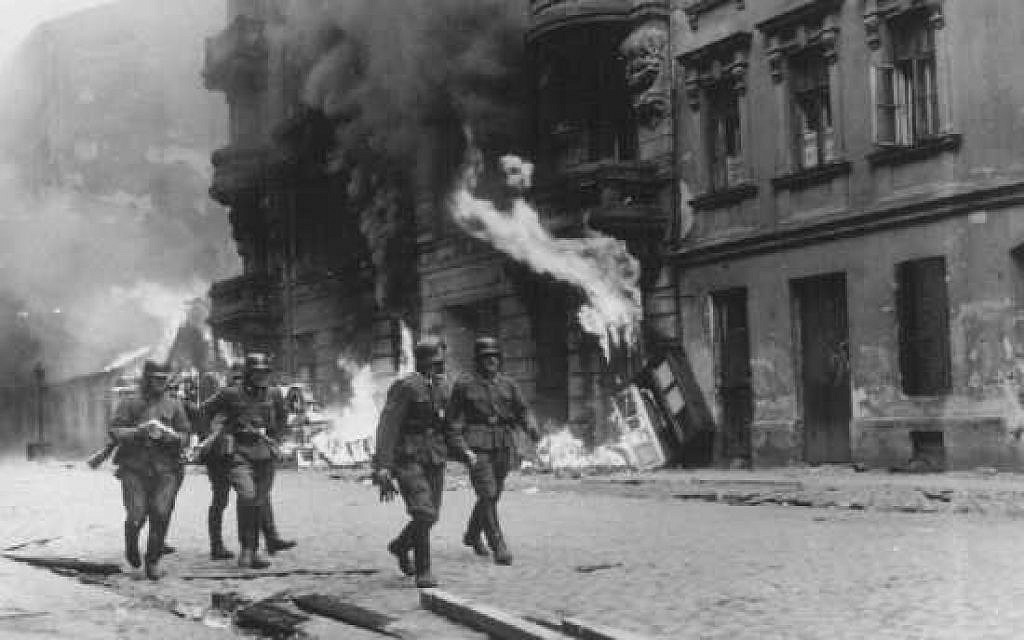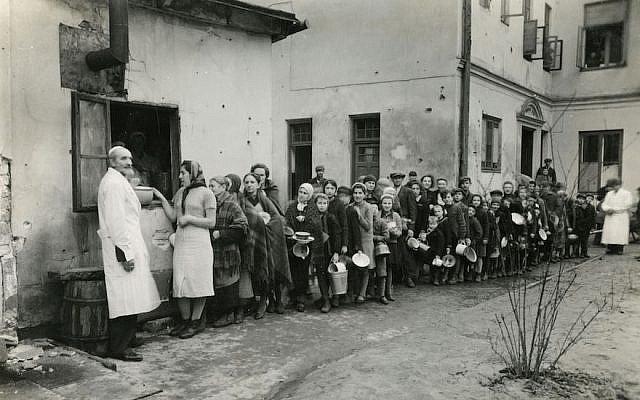The Warsaw Ghetto wall Last remaining section of Warsaw Ghetto wall To create the Warsaw Ghetto, the Germans built 11 miles of brick walls around the Jewish quarter; this area was then closed to outsiders on November 15, 1940. The wall was torn down in 1943 when the Ghetto was liquidated.
This excerpt from 7 November 1939 is taken from Hans Frank’s diary. Hans Frank was the leader of the General Government. This was an area of Poland that was controlled by Germany after invasion in September 1939. The diary shows notes from a meeting between high ranking Nazis, and states that a special ghetto ‘has to be established for the Jews’ in Warsaw.This document is a translation used in theCourtesy of Collections.This excerpt from 7 November 1939 is taken from Hans Frank’s diary. Hans Frank was the leader of the General Government.
This was an area of Poland that was controlled by Germany after invasion in September 1939. The diary shows notes from a meeting between high ranking Nazis, and states that a special ghetto ‘has to be established for the Jews’ in Warsaw.This document is a translation used in theCourtesy of Collections. Prior to the Second World War, Warsaw was the capital of Poland. The city had 1.3 million inhabitants, of which 380,567 were Jewish.

This was the largest Jewish community in Europe at the time.The Nazis occupied Warsaw on 29 September 1939, four weeks after invading Poland. The Jewish population in Warsaw had grown following to concentrate Jews in cities and towns, but a ghetto was not decreed until 12 October 1940.The ghetto was segregated from the rest of the population by a wall and sealed on 15 November 1940. Jewish policemen guarded the inside of the wall, and Nazi and Polish officers patrolled the outside. Runbow free download. Only those with special permits could leave the ghetto. Over 400,000 people were imprisoned. Due to the scarcity of food, smuggling became common.
To get food into the ghetto smugglers would scale the walls using ladders, use connecting buildings, the sewers, or workers who regularly entered and left the ghetto.Photographer unknown.Courtesy of Collections.Due to the scarcity of food, smuggling became common. To get food into the ghetto smugglers would scale the walls using ladders, use connecting buildings, the sewers, or workers who regularly entered and left the ghetto.Photographer unknown.Courtesy of Collections.
Janusz KorczakJanusz Korczak was a well-known Polish Jewish teacher, doctor, and children’s author based in Warsaw. Korczak studied medicine at the University of Warsaw before serving in both the Russo-Japanese War and the First World War as a military doctor. Between 1911 and 1912 Korczak set up and led an orphanage in Warsaw for Jewish children.In 1940, following the German invasion of Poland, the orphanage was moved into the area designated to be the Warsaw Ghetto. Despite the terrible conditions, Korczak worked tirelessly to ensure the children had adequate food and social activities.Over the next few years, Korczak was repeatedly offered opportunities by underground resistance groups to escape the ghetto, but he refused to abandon the children in the orphanage.
In the first week of August 1942, the Nazis came to the orphanage to collect the 200 children who were still housed there. Korczak insisted that he would accompany them. Korczak and the children were marched to the Umschlagplatz, the deportation point of the ghetto, and sent together to their deaths at the Treblinka extermination camp. Whilst conditions in the ghetto were extremely difficult, some inhabitants were determined to continue cultural aspects of their previous life.Despite education being banned at almost all levels, there were schools throughout the ghetto. Adults could also attend seminars and lectures, often led by those at the top of their field, such as Professor Hirsczfeld, a prominent bacteriologist who led lectures for medical students. Until 1942, Jewish book stores also operated in the ghetto.There were also several theatres which showed plays, as well as artists, musicians, bands and writers, who published covertly.From 15 January 1941, inhabitants of the ghetto could also send and receive post through the Warsaw Post Office based in the ghetto.
Post was unreliable and could be temporarily suspended. It was also censored and could only be sent to neutral countries not at war with Germany. Despite these challenges, the postal service meant that inhabitants could receive food packages from relatives in Poland or abroad, and spread the word about the poor conditions there, albeit using indirect language or drawings.

Emanuel Ringelblum (1900-1944) was the founder of an underground archive compiled within the Warsaw Ghetto. This book was written by Ringelblum and documents life within the ghetto. In 1943, Ringelblum, his wife and their son went into hiding. A year later, they were denounced, captured and shot inside the Warsaw Pawiak prison.Courtesy of Collections.Emanuel Ringelblum (1900-1944) was the founder of an underground archive compiled within the Warsaw Ghetto.
Murder mystery game how to. Adventure Escape: Murder Manor (Mystery Room, Doors, and Floors Detective Story!) By: Haiku Games. This is a complete walkthrough guide with help, hints, tips, tricks, solutions and answers for Adventure Escape: Murder Manor (Mystery Room, Doors, and Floors Detective Story!) by Haiku Games.
This book was written by Ringelblum and documents life within the ghetto. In 1943, Ringelblum, his wife and their son went into hiding. A year later, they were denounced, captured and shot inside the Warsaw Pawiak prison.Courtesy of Collections. This photograph was taken as part of the Stroop Report in May 1943.
It shows Jews being forcibly removed from a bunker following the Warsaw Ghetto Uprising. Following their removal, it is likely that these Jews were deported to Treblinka extermination camp and murdered.Courtesy of Collections.This photograph was taken as part of the Stroop Report in May 1943. It shows Jews being forcibly removed from a bunker following the Warsaw Ghetto Uprising. Following their removal, it is likely that these Jews were deported to Treblinka extermination camp and murdered.Courtesy of Collections.